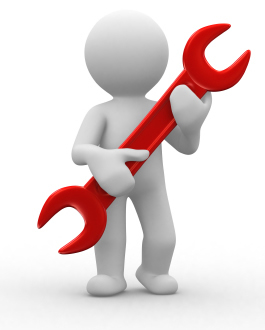Preventive maintenance anticipates failures and adopts necessary actions to check failures before they occur. It includes activities like inspection, lubrication, cleaning unkeeps, minor adjustments and replacements found necessary at the time of inspection etc. Its purpose is to minimize breakdowns and excessive depreciation. Neither equipment nor facilities should be allowed to go to the breaking point. In its simplest form, preventive maintenance can be compared to the service schedule for an automobile.
Preventive maintenance can be either: running maintenance or “shut down maintenance”.
- Running maintenance includes maintenance activities e.g. minor adjustments in machines revealed through inspections, lubrication, cleaning and upkeep etc., which are carried out when the machine is still running.
- Shutdown maintenance includes preventive maintenance activities such as minor component replacement whose needs are identified through inspections, which require stoppage of machines.
Preventive inspection is one of the key activities of preventive maintenance which is usually performed by making use of human senses watch (eye), listen (ear), touch (hand, leg, body smell (nose) and taste (tongue). But the trend is changing towards use of condition monitoring instruments. Such maintenance practice is known as predictive maintenance or condition based maintenance.
Importance of Preventive Maintenance
The most important reason for a preventive maintenance program is reduced costs as seen in these many ways.
- Reduced production downtime, resulting in fewer machine breakdowns.
- Better conservation of assets and increased life expectancy of assets, thereby eliminating premature replacement of machinery and equipment.
- Reduced overtime costs and more economical use of maintenance workers due to working on a scheduled basis instead of a crash basis to repair breakdowns.
- Timely, routine repairs circumvent fewer large-scale repairs.
- Reduced cost of repairs by reducing secondary failures. When parts fail in service, they usually damage other parts.
- Reduced product rejects, rework, and scrap due to better overall equipment condition.
- Identification of equipment with excessive maintenance costs, indicating the need for corrective maintenance, operator training, or replacement of obsolete equipment.
- Improved safety and quality conditions.
Preventive maintenance, therefore, is a very important ongoing accident prevention activity, which you should integrate into your operations/ product manufacturing process.
